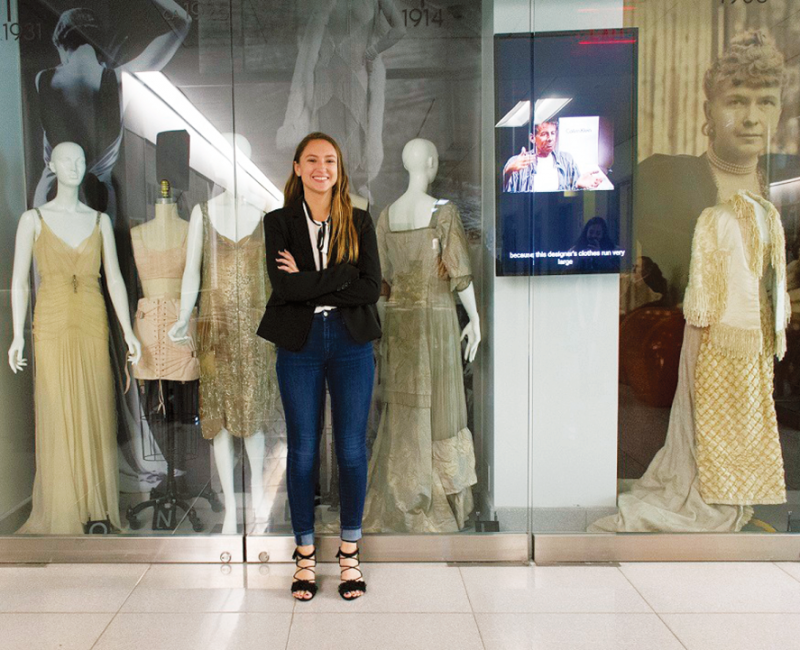Exhibit examines female form through history

A costume and textile exhibit at the College of Human Ecology examined how women’s bodies have been manipulated and shaped to fit fashionable silhouettes at different moments through history, from corsets and girdles to diet and exercise.
“Go Figure: The Fashion Silhouette & The Female Form looks at perceptions and representations of Euro-American ideals of beauty through the 19th, 20th and 21st centuries,” said exhibit curator, Rachel Doran FSAD ’19. “Body image is something I’ve always been very interested in, and this exhibit allowed me to explore the intersection of body image and fashion, and so I looked at ways women control their bodies in how they look.”
Doran said her interest in the intersection of body image and fashion began in middle school, hearing and taking part in discussions around body images portrayed in fashion magazines that set unrealistic expectations for girls who are growing into their bodies and selves.
According to Doran, the main switch in trends most recently has been from incredibly thin models to ones who are hyperfit, which does not necessarily make things better, she said.
“In the 1950s, women aimed to have a fuller figure, so people were taking weight gain supplements,” Doran said. “In the 1960s, that flipped around, and a record number of amphetamines were prescribed for weight loss.”
Moving into the 1970s, Doran said fitness became a key attribute of fashion after women began playing more sports through Title IX, leading to a more athletic figure. The fitness craze continued in the 1980s and with the growing popularity of exercise, control of the body continued to revolve around diet and exercise.
“In the 1990s, the ideal figure became even thinner, where the toned ‘’80s babe’ gave way to the waifish, ‘heroin chic’ supermodel of the ’90s – thin was in.”
From the empire waist of the 1800s to low-rise jeans showing off slim abs in the 2000s, Doran says shaping the human body has been critical to fashion changes and illustrates the dynamic nature of socio-cultural conceptions of beauty.